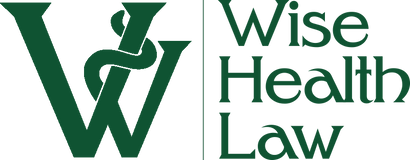The primary health-related story across the globe right now is undoubtedly the coronavirus, the risks it presents and how the threat is being handled. Below, we will provide an overview of what the virus means to both Canadian health practitioners and the public in general, as well as the current status of the virus in Ontario. In addition, we will look at the Quarantine Act, and what that means for Ontarians who may come into contact with the virus going forward.
For Health Practitioners
The testing procedures and treatment of the coronavirus (aka 2019-nCoV) are evolving in real-time as researchers discover more about the virus. However, the government of Canada has made several recommendations for health care practitioners across the country:
What to do if a patient presents with symptoms and has recently travelled to an area where the virus is circulating (or has been in contact with someone who has):
- place the patient in a designated separate waiting area or space
- encourage the patient with signs and symptoms of an acute respiratory infection to perform respiratory hygiene/cough etiquette, and provide tissues, alcohol-based hand rubs and a waste receptacle
- limit visitors to only those who are essential
- do notcohort with other patients (unless necessary, in which case cohort only with patients confirmed to have 2019-nCoV infection)
For the Public at Large
First and foremost, it is important to keep in mind that the threat to those in Ontario is still considered to be low at this time. Please see below for more on the current status of the coronavirus in the province. There are, however, steps that peopel can take to further limit their risk of contracting the virus as they go about their lives.
Keep in mind how the virus is most commonly spread. To date, it is believed that the coronavirus is most often spread through droplets in the air after a cough or sneeze, or close contact such as touching or shaking hands, followed by touching your eyes, nose or mouth before properly washing your hands.
Practise proper cough and sneeze etiquette:
- Cover your mouth and nose with your arm to reduce the spread of germs.
- If you use a tissue, dispose of it as soon as possible and wash your hands afterwards.
Wash your hands often:
- Wash your hands often with soap under warm running water for at least 20 seconds.
- Use alcohol-based hand sanitizer only if soap and water are not available.
Monitor your health. Be aware of the symptoms of the virus and inform your doctor immediately if you experience the following, particular if you have recently been travelling:
- coughing
- fever
- difficulty breathing
In addition to the above, avoid contact with anyone who is sick, and if you are sick. The best way to prevent transmission of a virus is to avoid others until you are cleared to do so. Of course, if you are sick and have reason to suspect that it may be coronavirus, you should reach out to your health care provider immediately. If you are planning on travelling in the near future, you can find more information on how to protect your health while doing so, here.
The Current Status of the Coronavirus in Ontario
The Ministry of Health is providing daily updates with respect to the status of suspected cases of coronavirus in the province. As of today, February 6, 169 patients in Ontario have been tested for the virus. Of that number, 104 have been confirmed negative for the virus, and 3 have tested positive. 62 patients remain under investigation.
The province is continuing to proactively monitor hospitals for signs of additional coronavirus cases and is meeting with hospitals and health providers in proximity to Pearson International Airport to advise on screening measures.
The Federal Quarantine Act
The Quarantine Act was first introduced in Canada in 1872 and remained unchanged for well over 100 years. However, after the SARS outbreak in 2003, significant changes were made to address similar situations going forward.
The Act allows government officials to impose screening procedures at airports as well as isolation for those suspected to have come into contact with a virus or communicable disease. This is what will occur this week, as Canada brings close to 200 evacuees from China to an air force base in Trenton, Ontario. The evacuees will stay on the base in a hotel-like facility for a period of 14 days while they are assessed for potential infection. They will not be moved to a hospital unless they exhibit signs requiring acute medical attention.
At Wise Health Law, we provide exceptional guidance on health law matters to public hospitals, long-term care homes, and other health-care organizations across the province. Our lawyers monitor trends and developments in health so that we can provide forward-thinking legal and risk management advice to all our clients. Contact us online, or at 416-915-4234 for a consultation.
To learn more about Wise Health Law and our services, please contact us!





